Triisopropyl phosphite
- CAS NO.:116-17-6
- Empirical Formula: C9H21O3P
- Molecular Weight: 208.24
- MDL number: MFCD00008874
- EINECS: 204-130-0
- SAFETY DATA SHEET (SDS)
- Update Date: 2025-01-27 09:38:02
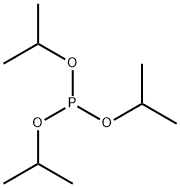
What is Triisopropyl phosphite?
Chemical properties
Colorless liquid; characteristic odor. Miscible with most common organic solvents; insoluble in water; hydrolyzes slowly in water; exposure to air should be minimum; high thermal stability. Combustible.
The Uses of Triisopropyl phosphite
Triisopropyl phosphite can be used as a reactant:
- With Ru-based indenylidene complexes to form 1st generation complexes for metathesis reactions.
- In Perkow-type reaction to synthesize compounds containing polarized carbon-carbon double bonds.
- For the synthesis of phosphonohydrazines by reacting with arylamines and isoamyl nitrite.
It can also be used as an alternative to triphenylphosphine in Mitsunobu reaction to facilitate the isolation of products.
The Uses of Triisopropyl phosphite
Intermediate for insecticides, component of vinyl stabilizers, lubricant additive, specialty solvent.
Purification Methods
Distil it from sodium, under vacuum, through a column packed with glass helices. (This removes any dialkyl phosphonate.) [Ford-Moore & Williams J Chem Soc 1465 1947, Arbuzov Chem Ber 38 1171 1905, see Verkade & Coskren in Organo Phosphorus Compound (Kosolapoff & Maier eds) Wiley Vol 2 pp 1-187 1972, Beilstein 1 IV 1476.]
Properties of Triisopropyl phosphite
| Boiling point: | 63-64 °C11 mm Hg(lit.) |
| Density | 0.844 g/mL at 25 °C(lit.) |
| vapor pressure | <2 mm Hg ( 20 °C) |
| refractive index | n |
| Flash point: | 154 °F |
| storage temp. | -20°C |
| form | Liquid |
| color | Clear |
| Specific Gravity | 0.844 |
| Water Solubility | Insoluble |
| Sensitive | Moisture Sensitive |
| BRN | 1701528 |
| CAS DataBase Reference | 116-17-6(CAS DataBase Reference) |
| NIST Chemistry Reference | Phosphorous acid, tris(1-methylethyl) ester(116-17-6) |
| EPA Substance Registry System | Phosphorous acid, tris(1-methylethyl) ester (116-17-6) |
Safety information for Triisopropyl phosphite
| Signal word | Danger |
| Pictogram(s) |
 Skull and Crossbones Acute Toxicity GHS06 |
| GHS Hazard Statements |
H301:Acute toxicity,oral H315:Skin corrosion/irritation |
| Precautionary Statement Codes |
P302+P352:IF ON SKIN: wash with plenty of soap and water. |
Computed Descriptors for Triisopropyl phosphite
Triisopropyl phosphite manufacturer
Astrix Pharmaceuticals
1Y
Phone:+91-9989993941
Whatsapp: +91-9989993941
product: Triisopropyl phosphite 116-17-6 95.0%
New Products
1-Boc-4-cyanopiperidine tert-Butyl carbazate 1-(TERT-BUTOXYCARBONYL)-2-PYRROLIDINONE TETRABUTYLAMMONIUM CYANIDE TETRAHYDRO-2H-PYRAN-3-OL 3-Pyridineacrylic acid Nickel(II) perchlorate hexahydrate, 98% 4-Bromophenylacetonitrile, 95% 3-Bromo-4-fluoroaniline, 97% Sodium tetraborate decahydrate, 98% Palladium(II) acetate, trimer, Pd 99% 4-Bromo-2-chlorotoluene, 97% Tadalafil Clopidogrel bisulfate Sitagliptin Phosphate Monohydrate Cabergoline Fexofinadine HCl Etoricoxib 4-Amino Acetophenone 2-Chloro Acetophenone Amlodipine Base 2,3,5-Triiodobenzoic Acid Pyrrolidine Diiodo PentoxideRelated products of tetrahydrofuran
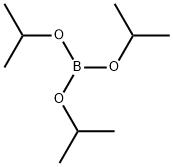

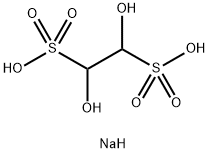

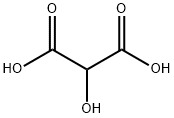


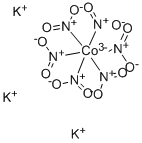
You may like
-
 Triisopropyl phosphite 116-17-6 95.0%View Details
Triisopropyl phosphite 116-17-6 95.0%View Details
116-17-6 -
 Medronic acid impurity A CAS 116-17-6View Details
Medronic acid impurity A CAS 116-17-6View Details
116-17-6 -
 Triisopropyl phosphite CAS 116-17-6View Details
Triisopropyl phosphite CAS 116-17-6View Details
116-17-6 -
 366789-02-8 Riveroxaban 98%View Details
366789-02-8 Riveroxaban 98%View Details
366789-02-8 -
 Carvedilol 98%View Details
Carvedilol 98%View Details
72956-09-3 -
 Abiretorone 154229-18-2 98%View Details
Abiretorone 154229-18-2 98%View Details
154229-18-2 -
 73590-58-6 Omeprazole 98%View Details
73590-58-6 Omeprazole 98%View Details
73590-58-6 -
 Sertraline HCl 98%View Details
Sertraline HCl 98%View Details
79559-97-0
Statement: All products displayed on this website are only used for non medical purposes such as industrial applications or scientific research, and cannot be used for clinical diagnosis or treatment of humans or animals. They are not medicinal or edible.
